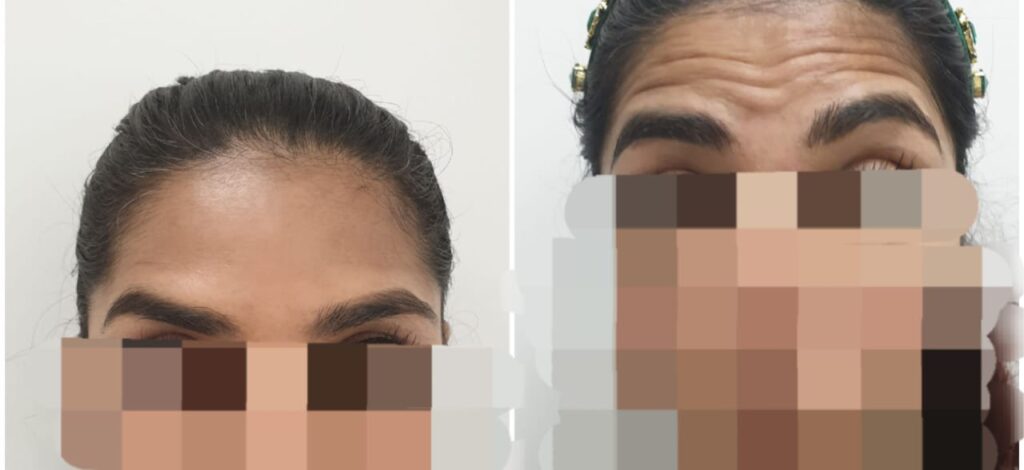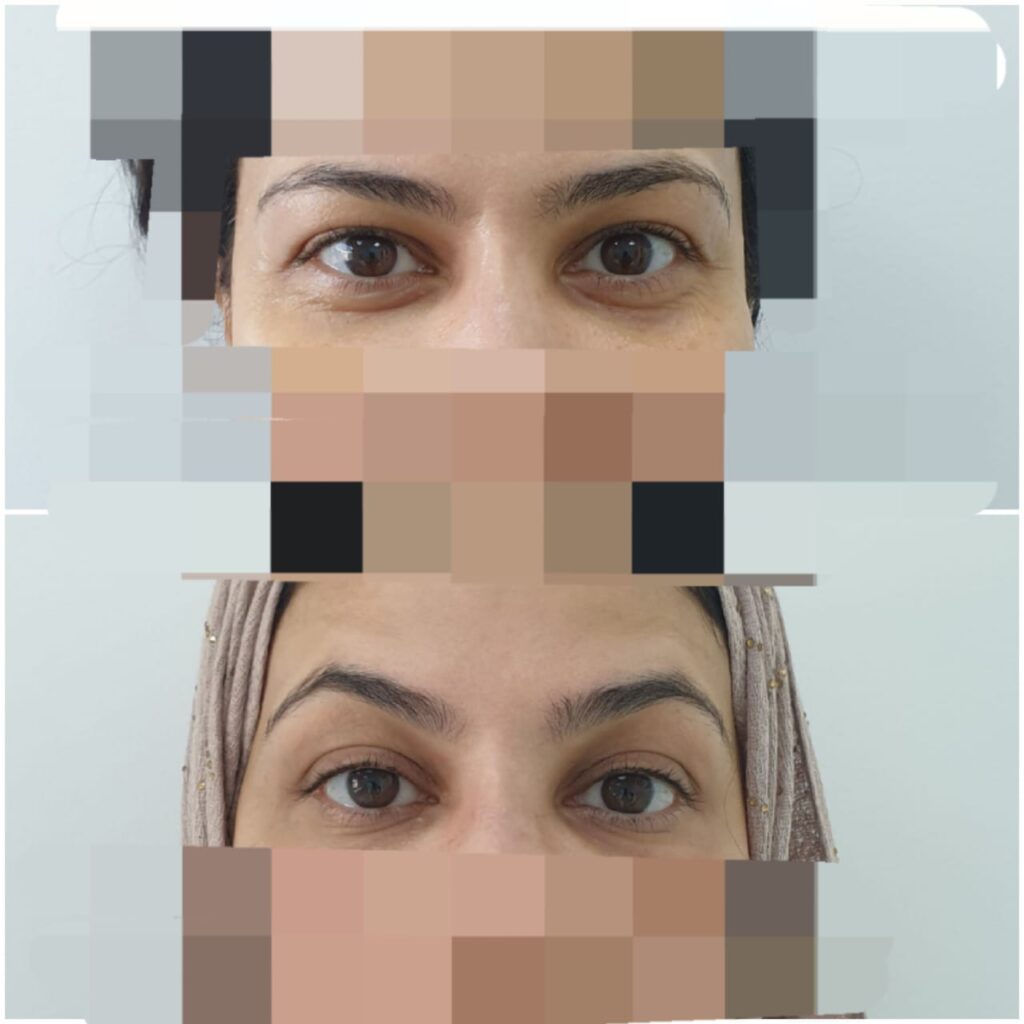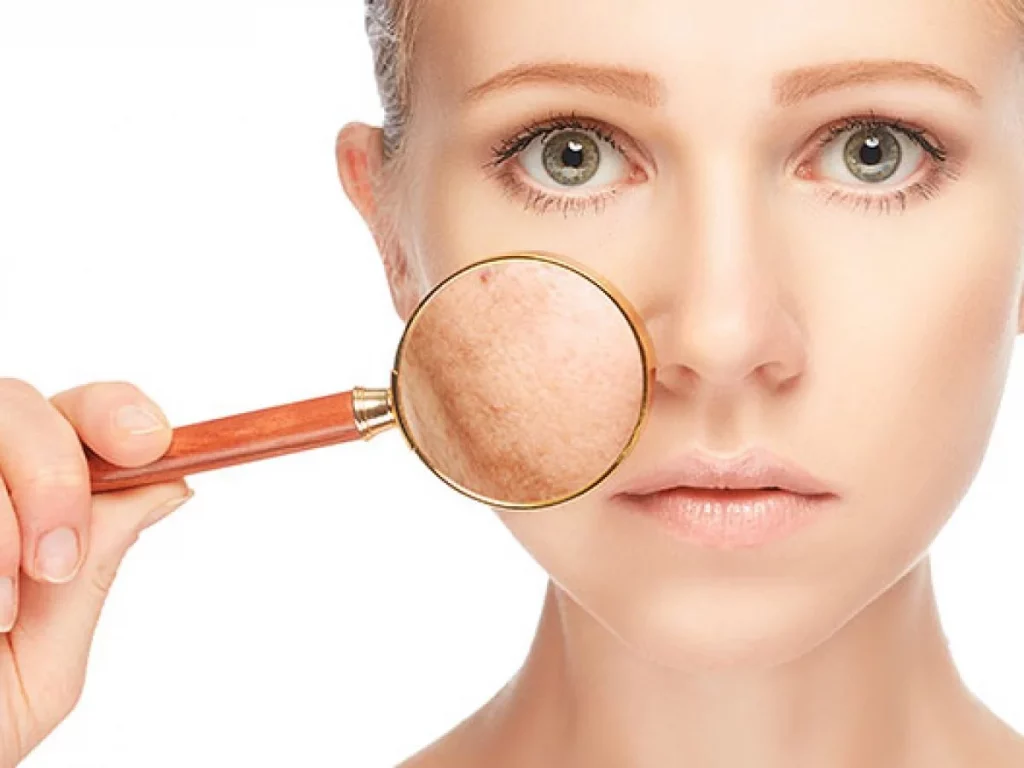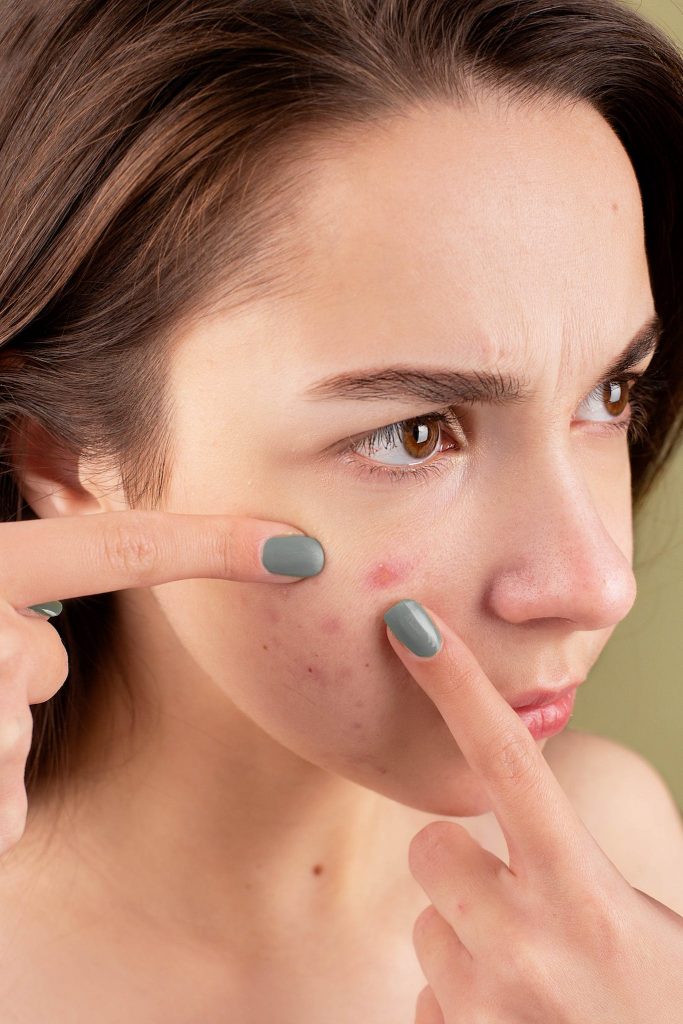Botox in Dubai has become an increasingly popular cosmetic procedure. Esteemed for its ability to rejuvenate one’s appearance, Botox treatments offer a minimally invasive solution to reduce wrinkles and fine lines.
What is Botox?
The bacteria Clostridium botulinum produces the neurotoxic protein known as botox, also referred to as botulinum toxin. It’s primarily used in medical and cosmetic procedures because it paralyses muscles temporarily. In small, controlled amounts, it helps to treat conditions like excessive sweating, migraines, muscular disorders, and some bladder and bowel disorders.
Botox in Dubai is most commonly used in aesthetic treatments to reduce the appearance of facial wrinkles. By causing temporary muscle paralysis, it relaxes facial muscles to smooth out lines and wrinkles, offering a youthful look. Despite its common fear of toxicity, Botox is considered safe and effective when administered by a trained professional.
Types of Botox in Dubai
Botox comes in various forms, differing primarily in what strain and potency of botulinum toxin they contain. The most common types include Botox Cosmetic, Dysport, Xeomin, and Jeuveau.
Botox Cosmetic
Botox Cosmetic is the original and most well-known brand name for botulinum toxin type A. The procedure smoothens the wrinkles in the forehead, between the eyebrows, and around the eyes. Typically the results last between three to six months.
Dysport
Dysport is another popular botulinum toxin type A product known for its natural-looking results. It’s typically used to treat moderate to severe frown lines between the eyebrows, with effects usually seen a bit faster than Botox and lasting about the same time.
Xeomin
Xeomin is unique because it’s a “naked” botulinum toxin, meaning it doesn’t contain any added proteins around the active molecule. This feature could make it less likely to trigger a negative immune response. Xeomin is commonly used to treat frown lines, forehead wrinkles, and crowfeet.
Jeuveau
Jeuveau is a newer product on the market, also made from botulinum toxin type A. It’s similar to Botox and is specifically used for treating frown lines. Some users have reported that Jeuveau offers a more affordable alternative to Botox, with comparable results and duration.
Advantages of Botox
The benefits of Botox extend beyond its primary purpose of reducing facial wrinkles. It can also be used for:
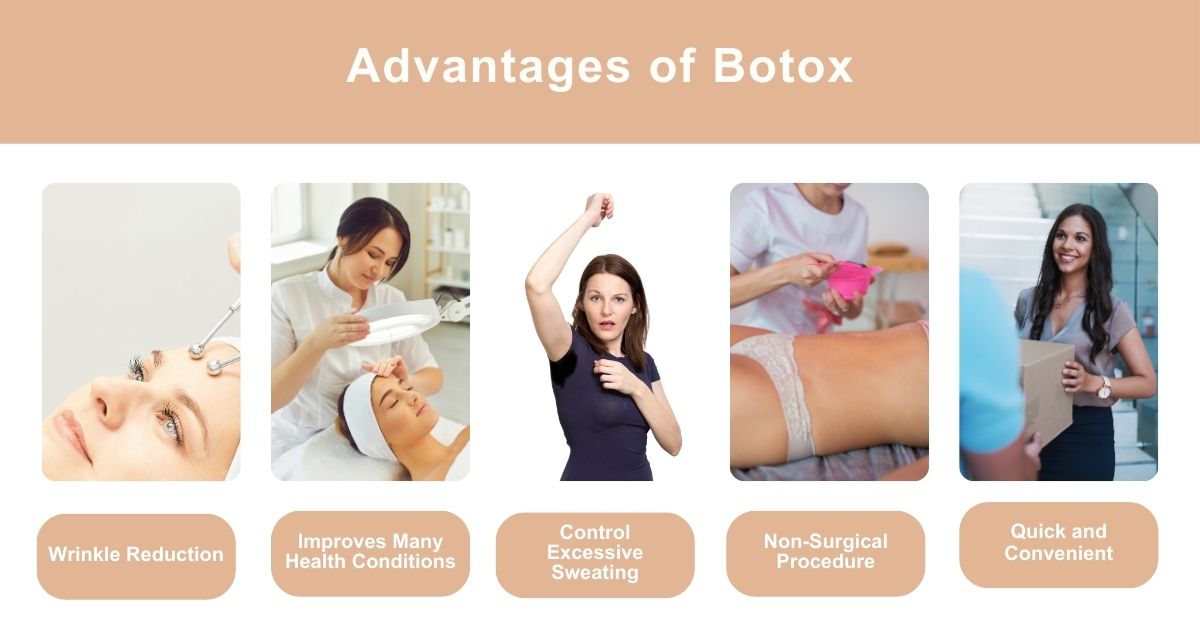
Wrinkle Reduction
Botox is widely recognised for its ability to reduce facial wrinkles, particularly those caused by repetitive muscle movements. By temporarily paralysing the targeted muscles, Botox can help diminish the appearance of crow’s feet, forehead lines, and frown lines, giving the face a more youthful and relaxed appearance.
Improves Many Health Conditions
Botox has proven effective in treating various medical conditions. It can help alleviate chronic migraines by reducing headache frequency and intensity. Additionally, botox injections can be used to treat eyelid twitching and cervical dystonia (a neurological disorder).
Controls Excessive Sweating
The treatment of hyperhidrosis with Botox can reduce excessive sweating. By blocking the signals from nerves that stimulate sweat glands, Botox injections can reduce perspiration in areas such as the underarms, palms, or feet, providing relief and improving the quality of life for individuals with this condition.
Non-Surgical Procedure
A non-surgical cosmetic treatment, Botox doesn’t require invasive surgery or incisions. Instead, it injects the toxin directly into the targeted muscles or areas. This minimises the associated risks, recovery time, and scarring typically associated with surgical interventions.
Quick and Convenient
Botox injections are typically quick procedures that can be performed in a doctor’s office or medical spa. The procedure often just takes a few minutes so that patients can return to their regular routines quickly.
Additionally, Botox’s effects can be seen after just a few days, with the full benefits visible in about a week.
The Procedure
Botox treatments involve the injection of the substance into the targeted area. The procedure is usually brief and requires minimal downtime, typically performed in a clinic or an outpatient setting.
Step 1: Consultation
Discuss your concerns, objectives, and medical history with a qualified medical professional.
The provider will evaluate your suitability for the treatment and resolve your concerns.
Step 2: Preparation
The medical professional prepare for the procedure by identifying the target areas for injection and discussing the expected results with you.
Step 3: Cleansing the Area
Antiseptic solutions are applied to the treatment areas to reduce infection risks.
Step 4: Anesthesia (if necessary)
A topical numbing cream or ice may be applied to numb the area before the injections.
Step 5: Injection Process
The medical professional administers Botox by injecting it into the targeted muscles or areas using a fine needle. The number of injections depends on the treatment plan discussed during the consultation.
Step 6: Post-Treatment Instructions
After the injections, you receive post-treatment instructions, such as avoiding touching or massaging the treated areas for a few hours, refraining from strenuous exercise, and avoiding lying flat for a few hours.
Step 7: Follow-Up
A follow-up appointment may be scheduled if the treatment results require adjustments.
Before the Procedure
This section covers the preparations and considerations before undergoing a Botox treatment.
During the Procedure
This section outlines what happens during the Botox procedure itself.
After Botox
This section includes guidelines and recommendations for the post-treatment period.
Recovery
This section outlines the healing stages and what to expect during recovery.
Table for Healing Stages:
| Healing Stages | Description |
| Immediate Effects | – Mild redness, swelling, or pinpoint bleeding at injection sites |
| – Temporary discomfort or tenderness in the treated areas | |
| – Typically subsides quickly | |
| Initial Days | – Botox effects start becoming noticeable within a few days |
| – Full results usually appear within one to two weeks | |
| Long-Term | – Results can last for several months |
| – Duration may vary for each individual | |
| – Follow-up treatments may be required for maintenance |
Preoperative Care for Botox
Before receiving Botox, a thorough consultation is necessary to discuss your expectations and potential risks. Discontinuing some medications may be necessary, including blood thinners.
Postoperative Care for Botox
Post-Botox, patients are advised to avoid strenuous activities and direct sunlight. A temporary side effect may include bruising and swelling.
Who is and who is not a suitable candidate for Botox Surgery?
Determining suitability for Botox treatment depends on various factors. Generally, suitable candidates for Botox include individuals with realistic expectations, good overall health, and specific concerns that Botox can address. However, certain conditions and circumstances may make someone unsuitable for Botox treatment.
However, there are certain situations where Botox may not be suitable:
What is the Right Age for Botox?
The right age for Botox depends on many factors, including individual concerns and goals. While Botox has no specific age requirement, it is commonly sought by individuals in their late 20s to early 50s.Consult with a qualified medical professional to determine your unique situation and for guidance.
Factors to consider when determining the right age for Botox:
How Long Does the Procedure Take?
The Botox procedure is typically a quick and straightforward process that can be completed within a short timeframe. The injection process usually only takes a few minutes. The length of the operation can vary from patient to patient based on things, including the number of locations being treated and the intricacy of the treatment strategy.
Additionally, the initial consultation and any necessary preparations, such as cleansing the treatment areas, may add some additional time to the overall procedure.
How to Choose the Best Surgeon for Botox in Dubai?
Choosing a reputable and experienced surgeon is crucial for a successful Botox treatment. Look for board-certified professionals, read reviews, and consider the surgeon’s experience and expertise in the field.
Why Choose Dr Shehzadi for Botox in Dubai?
Are you ready to discover how Dr Shehzadi Tasneem Sultan can help enhance your natural beauty and confidence? Don’t miss this chance! Book your free consultation today and take the first step towards personalised treatment plans and exceptional patient care. Schedule your consultation now and embark on your journey to achieve stunning, natural results.
